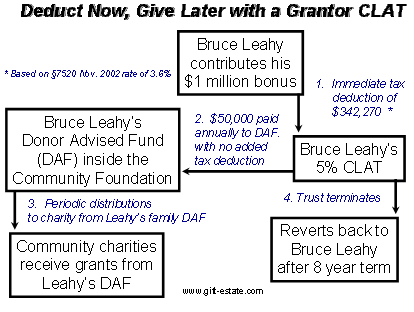Checklists for Older Clients – Vaughn W. Henry
Estate Planning Isnt Just for the Elderly
You dont need to be rich and famous to need an estate or financial plan. While some people have the expertise and time to manage their affairs, others are more comfortable with the advice and counsel of professional consultants. In either case, decisions need to be made ahead of time so youre not stampeded into making bad choices when things start to go wrong. First off, decide how comfortable you are with your current financial situation. Then decide whether you need professional assistance to sort through your options. One of the earliest questions you need to address is what happens if you are unable to manage your affairs competently down the road. Besides accidents and acute emergencies, there are chronic and progressive illnesses that prevent people from being able to enforce their wishes and keep on top of their finances. In either case, do you have a trusted family member, friend, or a professional advisor who can handle your money if you become incapacitated or ill? Have you made any decisions, and shared them with family members, about the level of care and extraordinary treatments needed should you become seriously ill?
Its Not Always about Money
 Often, arranging your affairs is more about preserving dignity and control. Sometimes estate planning is a function of life planning; doing simple things like modifying your residence to accommodate your physical restrictions will make things easier. For example, many people choose to widen doorways, lower light switches, install rails and bars in bathrooms, or to build ramps or lifts for stairs in order to make the home more comfortable. Occasionally there are other emotional concerns about losing independence. Distasteful as it may be, address them now, rather than later. For example, do you still feel safe driving, even at night? The problem is that many older drivers deny they have a problem or are so cognitively impaired they fail to recognize the cues that signal problems, e.g., forgetting to turn on headlights at dusk, getting lost in familiar neighborhoods, failing to recognize mechanical problems like low tire pressure, responding too slowly to emergencies, and so on. Family members and advisors need to step in and offer to help structure or organize things so you can minimize danger to self and others.
Often, arranging your affairs is more about preserving dignity and control. Sometimes estate planning is a function of life planning; doing simple things like modifying your residence to accommodate your physical restrictions will make things easier. For example, many people choose to widen doorways, lower light switches, install rails and bars in bathrooms, or to build ramps or lifts for stairs in order to make the home more comfortable. Occasionally there are other emotional concerns about losing independence. Distasteful as it may be, address them now, rather than later. For example, do you still feel safe driving, even at night? The problem is that many older drivers deny they have a problem or are so cognitively impaired they fail to recognize the cues that signal problems, e.g., forgetting to turn on headlights at dusk, getting lost in familiar neighborhoods, failing to recognize mechanical problems like low tire pressure, responding too slowly to emergencies, and so on. Family members and advisors need to step in and offer to help structure or organize things so you can minimize danger to self and others.
Other difficult questions the elderly often avoid include quality of life issues. Is there adequate health and long-term care insurance? Is hospice or home care an option with your coverage? Some of this preparation involves discussions with medical providers about some very personal values. For instance, when youre very sick, how much information do you want your physician to relate to you and your family about diagnoses, treatments, and recovery outcomes? How involved do you want to be in decision making for your health care? Will you authorize and insist on pain medication if circumstances dictate its need, even if its not part of your medical treatment? Values planning issues involve medical, personal, emotional, and spiritual matters, so you need to discuss this with your family and physician if you expect procedures to be done according to your wishes. Not only will you want to stipulate how you want to be treated, part of a good estate plan allows you to tell family important things they should know. Itemize your thoughts in an ethical will where you not only tell heirs what you want them to receive, but why you want them to receive it and how your life developed over time. Its a great opportunity to leave your family a little something about yourself.
Have you made a list of all the important information that would be useful in case of family health emergencies? Have you discussed your funeral arrangements? A little preparation will save a lot of grief and expense; so make your choices now and regain control of your life planning. There is no time like the present to get started; youve put it off too long.
Information Checklist
- Birth certificates, marriage certificates, passports and other important identification documents, any court documents dealing with a name change or adoption proceedings
- Marriage contracts (pre-nuptial and post-nuptial, divorce or separation agreements)
- Life insurance policies (have you checked to see if beneficiary designations current and accurate?)
- Identify other insurance policies (disability, affinity programs, health, property & casualty, and annuity contracts), insurance agent contact information
- Stock and bond holdings, consolidated investment account statements, broker contact information
- Powers of attorney for health care and property, living will or advance directive documents, while not helpful after death, they are extremely important if there is a disability or incompetence.
- Your will and codicils (have you identified guardians for minors and elderly parents?). A list of personal items and the intended recipients, as it is often the family heirlooms that cause family rifts. If any mementos are given away early, mark them off the list so they will not be reported missing or stolen.
- Trust documents and amendments (properly titled property in the name of the trust)
- Trustee, and successor trustee contact information if any, and contact information for your lawyer
- Mortgage documents, due date and amount of mortgage payment or rent, location of deeds and property titles, including cemetery plots, any lease information
- Contact information for service people. Identifyautomatic debits or deposits and which accounts are involved (electric utilities, gas, pension payments, etc.), automatic deliveries or pick ups that need to be modified (trash, fuel oil or propane, mail, newspaper)
- Bank account information, checkbooks, passbook savings, account statements and PIN numbers, contact information for bankers or brokers, inventory of contents and location of safety deposit box and the key, credit card and ATM account numbers and their expiration dates; if there is a safe, who will have the combination
- Airline mileage points and phone numbers, life insurance provided by affinity groups, travel or credit card companies
- Partnership agreements, recent appraisals, corporate or partnership buy-sell arrangements, business continuity planning documents
- Pension, profit-sharing, IRA and other retirement plans (are beneficiary designations current now that new rules apply to changing required distributions), retirement plan administrator contact information. If theres a desire to support a charity with a bequest, these retirement plans make great, tax efficient ways to fund philanthropic interests with simple beneficiary designations.
- Contact information for your medical providers, current medications and dosages, Medicare claim number and Medigap policy number
- Employment contracts, deferred compensation or “golden parachutes/handcuffs” type agreements
- Any life income arrangements (commercial immediate annuities, charitable trusts, life estates)
- Social Security card
- Veteran’s benefits updated and military discharge paperwork, e.g., DD-214
- Organ donation instructions, funeral arrangements and burial instructions
- Directions for pet care
- Recent income and gift tax returns, contact information for your accountant, current 1099s and W-2s, expense and income worksheets for this tax year
- Inventory of capital assets (real estate, stock, investments, collectibles, etc.) with purchase price, history of acquisition, improvements and tax basis (which will be extremely important if the tax laws continue unchanged)
- Drivers license number and expiration date, vehicle registration information, inventory of any items in storage and storage company phone number
 Any post office rental box, contact information for neighbors and friends, a list of names and phone numbers of those who should be notified during a serious illness or death
Any post office rental box, contact information for neighbors and friends, a list of names and phone numbers of those who should be notified during a serious illness or death- Web site or e-mail accounts and passwords
- It is not too early to write an obituary while the person can contribute to it












